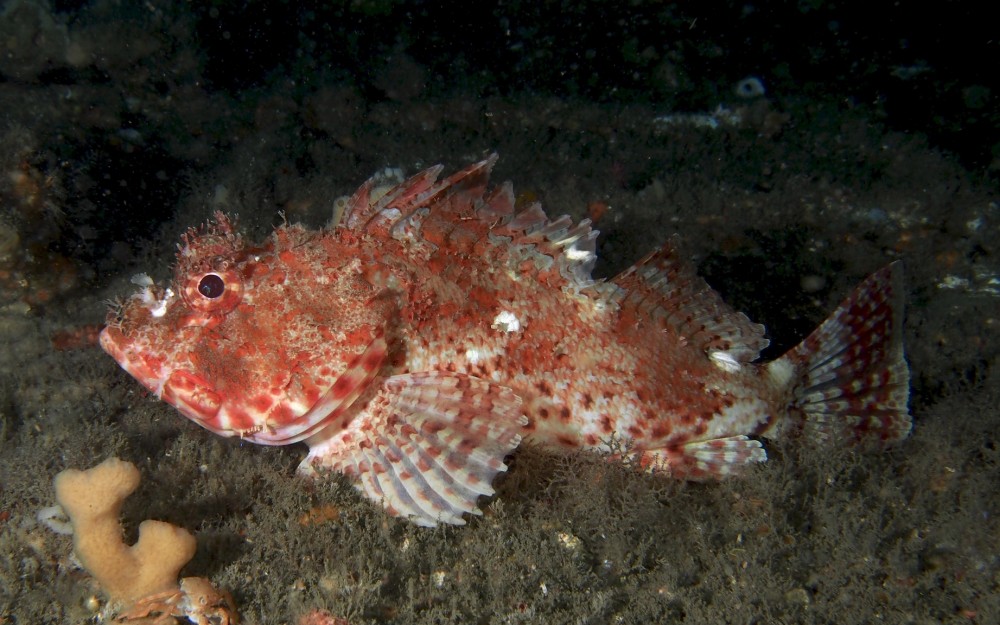Eastern red scorpionfish
(Scorpaena jacksoniensis)

Classification
General data
Scorpaena jacksoniensis, the Eastern red scorpionfish, Billy Bougain, cardinal scorpionfish, coral cod, coral perch, Eastern red scorpioncod, fire cod, Northern scorpionfish, ocean perch, prickly heat, red rockcod or red scorpion-cod, is a species of marine ray-finned fish belonging to the family Scorpaenidae, the scorpionfishes. It is found in the south western Pacific Ocean.
Description
Scorpaena jacksoniensis has 12 spines and 9 soft rays in its dorsal fin, the 4th (occasionally the 3rd) spine being the longest, There are 16–18, normally 17, fin rays in the pectoral fin. The pelvic fin base is covered in embedded cycloid scales and these are also found on the rear of the underside which has a thick skin. The lateral lacrimal spine has 2, occasionally 3, points; the forward lacrimal spine has, 1 or 2, small spiny points on its rear edge and the rear lacrimal spine has a single point and us directed forwards and downwards in juveniles and young with a standard length of less than 100 mm (3.9 in) but it is pointed either straight down or diagonally rearwards in adults.
There is a ridge in the middle of the interorbital space which has no spines but there is an occipital pit and a supplementary spine on the preoperculum. The pterotic spine is normally simple in young but in large adults, with a standard length greater than 28 cm (11 in) it may have 2 or more points. The gap separating the upper and lower opercular spines is clothed in thick skin which has sensory pores and canals. There are many skin flaps and tentacles on front part of the upper body.
The colour of this species is frequently bright red but its coloration is extremely variable, it can be light grey to bright red marked with blotches. There are normally small dark spots on the chest.[6] The juveniles can show a white to purplish blotch across the nape. Males have a large black spot on the soft-rayed part of the dorsal fin. This species has reached a maximum length of 40 cm (16 in).
Distribution and habitat
Scorpaena jacksoniensis is endemic to the temperate seas of southeastern Australia. It definitely occurs as far north as Caloundra in Queensland south to the Beware Reef in Victoria. It may also occur as far west as Western Port, Victoria, however the Victorian records are based on a few old specimens and the southern limit of this species appears to be Jervis Bay in New South Wales. This species occurs in shallow estuaries and on rocky coastal to deep, offshore reefs. It is a benthic species which is camouflaged among rocks, corals and algae at depths between 1 and 73 m (3 ft 3 in and 239 ft 6 in).











